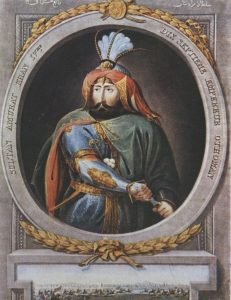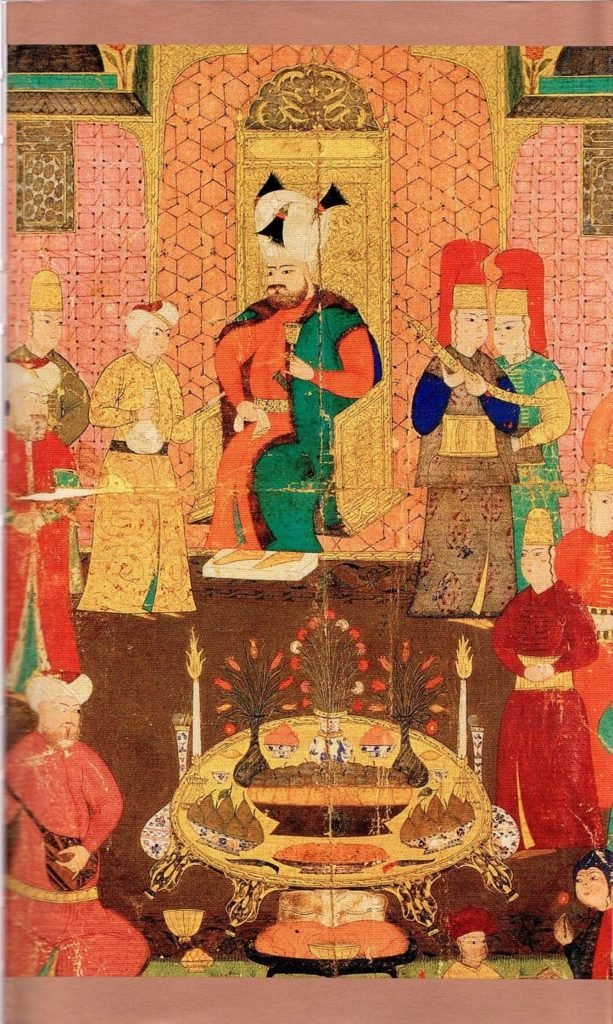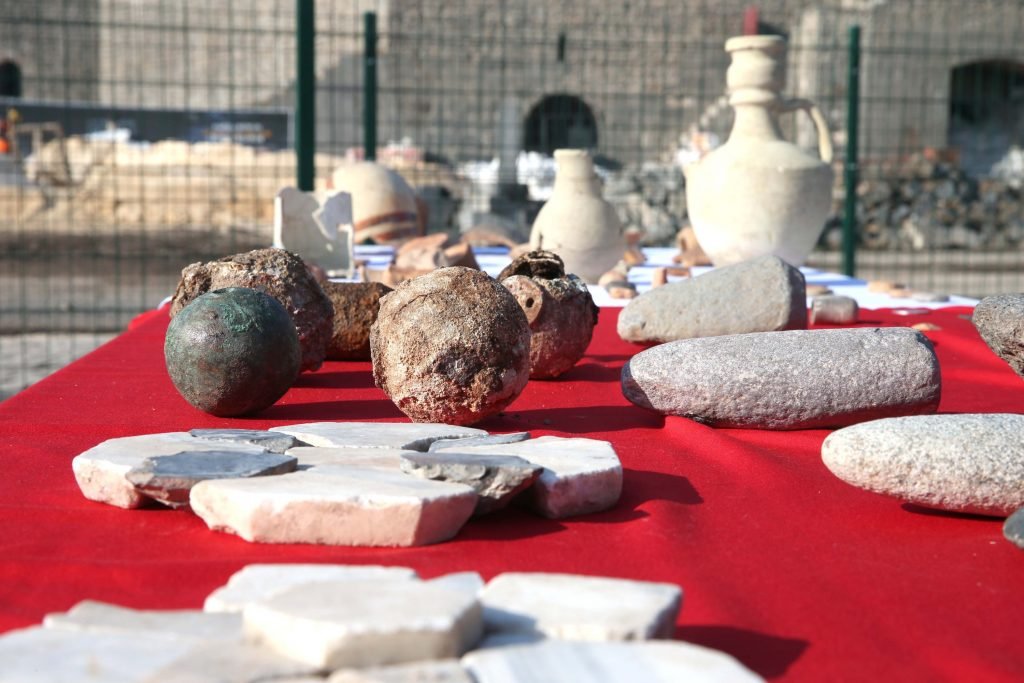The reign of Sultan Murad IV, known as the conqueror of Baghdad, is notable for halting the prevailing lawlessness and rebelliousness while restoring the authority of the state
Sultan Murad IV, the 17th of the Ottoman sultans and the 82nd caliph of the Muslims, was the son of Sultan Ahmed I and Mahpeyker Sultan. He had a good education and upbringing in the palace. When he was just 10 years old, he started dressing as a commoner and wandering around the city, making plans for his future work as a result of the cooperation he would establish with the public. He would keep a list of those he could benefit from and those he would punish. He finally ascended to the throne in place of his uncle, who was deposed in 1623. Since he was 12 years old, his mother became regent. When the sultan came of age, he slowly took over the reins.
Tobacco and loyalty
Abaza Mehmed Pasha, who had revolted to exact revenge on the rebels who killed Sultan Osman II, was defeated after a long struggle. Sultan Murad forgave the pasha because of the loyalty he showed to his brother Sultan Osman and made him the governor of Bosnia.
Sultan Murad punished the murderers of his brother. Soldiers started a great revolt in Istanbul. Sultan Murad, who was in a very difficult situation, suppressed the rebellion patiently by making concessions from time to time. In front of the statespeople and those gathered at Sultanahmet Square, all the soldiers pledged their loyalty to the sultan.
In 1633, a fire broke out in Istanbul, caused by somebody who fell asleep while smoking a pipe on a boat in the Cibali neighborhood. More than 20,000 homes were burned and 50,000 people were left homeless. In the aftermath, Sultan Murad forbade smoking tobacco and ordered that the coffee shops, where people used to gather to drink coffee and smoke, be destroyed. The sultan would dress up as a local, mingle with the crowds and have those he caught smoking put to death. It is said that 20,000 people were sentenced to death in this way. As such, many bullies and tyrants were cleared off the streets.
In 1633, Abaza Mehmed Pasha launched a campaign against Poland, which had not paid its annual tax. The king of Poland asked for peace. However, when he broke his pledge, Sultan Murad went on an expedition in 1634 and came to Edirne, thereupon the king of Poland requested an agreement.

Afterward, the sultan traveled around Istanbul and its surrounding cities, inspecting the public order. On his way to Bursa, he saw that the roads of Iznik were neglected, and had the qadi (judge) of Iznik executed for not performing his duties. Sheikh al-Islam (chief of the Ottoman ulema) Ahizade Hüseyin Efendi, who protested this execution and secretly organized meetings against the sultan, was also executed. Sultan Murad already had doubts about the sheikh al-Islam, whom he had previously suspected of harboring connections with the putschists. This is the first execution of a sheikh al-Islam in Ottoman history.
‘Worth a hundred castles like Baghdad’
In March 1635, Sultan Murad embarked on an eastward campaign and besieged Yerevan. He took the castle – which even Sultan Suleiman I, also known as Suleiman the Magnificent, could not take – in July after an 11-day siege. The shah did not appear because he could not venture into the war. Sultan Murad also took Tabriz in September. He gave up on going to Isfahan due to illness and returned to Istanbul via Diyarbakır.
Sultan Murad then went on an expedition to take Baghdad from the Safavids in 1638. He arrived in front of Baghdad on Nov. 16 after a five-month journey. When offered to visit Imam Abu Hanifa’s shrine in the previously conquered suburb of the city, he said, “When Baghdad is in the hands of the Shiites, we cannot dare visit head of our sect Imam-i Azam (Great Imam),” and did not visit until after the conquest of the city.
There were 40,000 soldiers in the city. The shah was absent as he thought that Sultan Murad would get tired of the siege and retreat. During the siege that lasted for 40 days, Grand Vizier Tayyar Mehmed Pasha was martyred by being shot in the forehead on the 37th day. The sultan, who got very upset upon the death of the grand vizier, couldn’t help saying, “Oh my Tayyar! You were worth a hundred castles like Baghdad.” The next day the castle fell. Admiring the loyalty and heroism of those who defended the castle, Sultan Murad released them all. The Iranian border, drawn by the Treaty of Qasr-e Shirin (or Treaty of Zuhab) signed on May 17, 1639, is still more or less in effect today. With this treaty, Iran also accepted the prohibition of insulting religious figures of the Sunni sect of Islam.
Relying on its navy, Venice took advantage of this expedition and broke its agreement with the Ottomans, withholding its tax and occupying the Dalmatian ports. Even while Sultan Murad was in Baghdad, he received daily updates regarding these events. When he returned to Istanbul from the expedition that lasted a year and a month, he immediately ordered the termination of commercial relations and that preparation be made for war. Venice, with France, was the number one state that traded with the Ottoman Empire. An important part of its economy depended on this trade and therefore Venice was alarmed by the interruption. The Divan (Imperial Council), delayed carrying out Sultan Murad’s order for 13 days. During this time, the Venetian ambassador came and accepted all the conditions of the Ottomans. Venice paid compensation and the war was stopped.
Sultan Murad ordered the closure of the Split customs exchange facility where goods entered and left the country via the Adriatic. Bosnian treasurer Mahmud Efendi showed great civil courage and said that delaying the closure by even one day would provide the treasury with a significant amount of income, so it had to remain open until the declaration of war. The sultan admired this relatively minor official’s objection to his order in favor of the state’s interests
However, Sultan Murad did not give up on his intention to go to war with Venice. This war, however, was left to his brother and successor, Sultan Ibrahim, as Sultan Murad died on Feb. 8, 1640, after battling gout for five years. His illness increased and took his life after 14 days of bed rest. He was 28 years old. He was buried in the tomb of his father, Sultan Ahmed I. His sultanate lasted for 16 1/2 years.
A peaceful country
Sultan Murad used to take opium extracts (morphine) given by the head physician in order to alleviate the pain of the gout disease he was suffering from. This made him feel tired and lethargic. Those who saw him staggering from time to time concluded that the sultan was consuming alcohol. Moreover, he reigned at a time in which alcohol was used for pain relief. The state dignitaries were not fond of the sultan’s friends and would accuse them of getting the sultan accustomed to debauchery, which was far from the truth for him.
He had the current building of the Kaaba – the most sacred site in Islam – built in 1635 after the site was ruined by floods. A door in the Masjid-i Harem is called Bab-ı Muradi (Gate of Murad), in honor of his memory. The golden gate he had built for the Kaaba now resides in the Mecca Museum.
He also restored the dilapidated building of the Karaköy Arab Mosque to its current state. He had the castles built in Kavaklar in the Bosporus. He had the walls of many cities repaired. The two mansions he had built in Topkapı Palace to commemorate the victory of Yerevan and Baghdad are among the most elegant architectural works of the period.
He had the tombs of Imam Abu Hanifa and Abdul-Qadir Gilani repaired in Baghdad. The Murat River, one of the largest tributaries of the Euphrates, is named after him as he had bridges built on it and inns next to it.
Like his father, he was a follower of Aziz Mahmud Hüdai from Üsküdar. He was also sympathetic toward the Mevlevi Order. He loved and respected Sheikh al-Islam Yahya Efendi, whom he called father. He was well versed in religious sciences. Before embarking on his second expedition, he personally took the test of the qadis. He wanted them to ask difficult questions, especially from Kalam (Islamic theology). His mind was always preoccupied with state affairs. He wanted to know everything. He had Machiavelli’s “Il Principe” (“The Prince”) translated so he could read it.
Although he was considered to have a harsh stance on political matters, he was tender-hearted. He used to write poems under the pen name Muradi. He was a master composer. He was the patron of many scholars, artists and poets. Unlike his brother, he was very generous, giving them gifts frequently. He enjoyed meeting them. Great men such as Sheikh al-Islam Yahya Efendi, poet Nefi, literary historian Nevizade Atai, historians Peçevi and Mehmed Khalifa, traveler Evliya Çelebi, geographer Katib Çelebi and Koçi Bey, whom the Austrian historian Joseph von Hammer-Purgstall called the “Turkish Montesquieu,” lived in his glorious time.
After his death, he left behind a peaceful country and an army with the world’s greatest strike force. When he ascended the throne, he succeeded in reducing the janissaries, elite infantry units in the Ottoman army, from 100,000 to 35,000. The treasury, which was empty when he took the throne, had 15 million gold coins at his death. The silver coins are not included in the account. He reformed the Tımar system, in which the projected revenue of a conquered territory was distributed in the form of temporary land grants among the military class. He took back the foundations which bullies had taken hold of. He took measures to prevent waste and extravagance.
Like Sultan Selim I
A generation ago, Istanbul, where not a single murder had been committed in a whole year, was in turmoil. Sultan Murad took drastic measures to restore the old order in the most populous city of this world. He brought the same success to the countryside as well. He established a personal intelligence network throughout the empire. He reorganized the spy organization in Europe and transformed it into what it was during the reign of Suleiman the Magnificent. The most hidden secrets began to reach the Ottoman palace day by day.
He learned about the oppressors and the tyrants everywhere. He was able to execute bullies so quickly while passing through certain cities during his expedition because he knew them all by name. He had recognized and punished a man in Konya who had a role in the murder of Hafız Pasha, while he was on his way to the Baghdad expedition.
Since his childhood was spent in revolutions, he was used to all kinds of disasters. The feeling of fear was alien to him. In eight years, he ordered the execution of a number of people who were considered untouchable until then, in order to show that there was no power above the authority of the state. Those who describe him as bloodthirsty don’t take into account the anarchy of his time and how the people suffered from it. He tried to be a sultan that the public wished for.
Ottoman historians characterize him as the greatest of the Ottoman sultans who came in the 242 years between the reigns of Sultan Suleiman the Magnificent and Sultan Mahmud II. According to Hammer, Sultan Murad extended the life and size of the state by half a century. Without him, the decline of the Ottoman Empire would not have started in 1683, but 50 years earlier. He revived the empire. Had he lived longer, he would have brought the state back to how it was during the reign of Suleiman the Magnificent.
Historian Mustafa Naima says: “He was extraordinarily similar to Sultan Selim I in terms of character and ability. But when he came to the throne, he did not find the state as (Sultan Selim) did. The army was out of order, the public order was broken, the finances were devastated. When Sultan Selim ascended the throne, he was 42; (Sultan Murad) on the other hand was 12 years old. He was deprived of the experience of Sultan Selim. Therefore, he was not a cihangir (world conqueror). But he was successful in every field. He was a great commander, a great statesman, a great diplomat. He was too harsh. However, he would not be offended by the truth, he would listen to it. There were no worthy statesmen around him. If there were, he would have eclipsed the rulers who came before him.”
The rebels used to threaten to depose him with his brothers at every opportunity. He had three of his brothers executed, two during the Yerevan and one during the Baghdad expeditions, according to the old constitutional tradition. He left behind a less competent brother, from which the Ottoman dynasty continued. Because none of his sons lived, only his seven daughters were able to reach adult age.
Europe’s greatest fear
He is likened to Trajan (53-117), one of the five greatest Roman emperors. He established good relations with the Uzbeks and the Georgian state. It has been suggested that he would have allied with them to occupy Iran, conquer Azerbaijan and establish a navy in the Caspian Sea, and would have extended the borders of the caliphate until they were the same as in the era of the Abbasids.
Europe’s greatest fear was that an army of this size would turn west. The Venetian ambassador had sent a report on this to his government. As a matter of fact, in his later days, the Akıncıs – forward-most raider units – had passed through Istria, where the Trieste port is located, and entered Bavaria. They trampled Regensburg. His untimely death brought a sigh of relief to Europe. Although he did not wage any important wars in Europe, he had a great influence there. French dramatist Jean Racine’s tragedy of “Bajazet” and English dramatist Philip Massinger’s play “Murad IV” are examples of this.
Vincent de Stochove, a French traveler of the same age, says, “He was the most handsome man and the most valiant soldier in his empire.” He was of medium height and broad shoulders. He was well dressed. He was very fond of horses. He had the most precious horses of the world in the Topkapı Palace stable. He often hunted as well.
He was a good rider, an exceptional sportsperson, adept at using all kinds of weapons, and was incredibly strong. Since Suleiman the Magnificent, no ruler had been loved and respected by the army as much as him. His courage, heroism, endurance to all difficulties, sharp intelligence, many talents and military genius aroused admiration. In archery, cavalry and swordsmanship, everyone agreed that he was unparalleled in the empire. He could jump from one fierce horse to the next without landing. While crossing the Aras river in the Yerevan campaign, he had grabbed an armored soldier, who was drowning in the water, by the collar with one hand, and pulled him to the shore, and gave him a bag of gold. Although he could not tolerate the slightest indiscipline and gave severe punishments, he was very compassionate to his soldiers. He used to visit mobile army hospitals and wounded tents every day.
Rumor has it that an arrow he would pull would fall farther from a rifle’s range and there was nothing he could not pierce with the javelin and arrow he threw. He once lifted a large man like Silahtar Musa Pasha by holding his belt with one hand and walked around the room several times. He could easily lift 200-okka (nearly 256-kilogram) maces. In an archery competition, he managed to hit a distance of 1070.5 gez (nearly 706 meters, or 2,316 feet) and a stone was erected in the place where this arrow fell. The 12 shields he pierced with a javelin were hung on the Vienna gate of Budapest as a souvenir, and the 12 armors he pierced with an arrow were hung at the Cairo castle.




